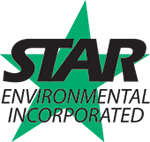Lead is a toxic metal that was used for many years in products found in and around our homes. Lead can also be emitted into the air from motor vehicles and industrial sources and can enter drinking water from plumbing materials.
In general, the older your facility or residence, the more likely it has lead-based paint. Lead can be found in facilities in the city, country or suburbs. It can be found in industrial/commercial facilities, apartments, single-family homes, and public housing. Some common sources include the following:
- Paint: Many facilities and homes built before 1978 have lead-based paint. The federal government banned lead-based paint from housing in 1978, although some states stopped its use even earlier.
- Soil: Soil can pick up lead from exterior paint or other sources such as leaded gas in cars, and children playing in yards can ingest or inhale lead dust.
- Dust: Dust can pick up lead from deteriorating lead-based paint or from soil tracked into a facility or home.
- Water: Plumbing may contain lead or lead solder. You cannot see, smell or taste lead, and boiling your water will not get rid of lead.
- Job: If you work with lead, you could bring it home on your hands or clothes. Shower and change clothes before coming home. Launder your work clothes separately from the rest of your family’s clothes.
- Vintage painted toys and furniture may use lead-based paint.
- Food and liquids stored in lead crystal or lead-glazed pottery or porcelain: Food can become contaminated because lead can leach in from these containers.
- Lead smelters or other industries that release lead into the air
- Hobbies that use lead, such as making pottery or stained glass, or refinishing furniture
- Medical: X-ray facilities typically use lead sheets for shielding. Care is required when decommissioning.
- Firearms: Lead bullets collected at shooting ranges are a potential hazard.
- Folk remedies that contain lead, such as “greta” and “azarcon” used to treat an upset stomach
Lead may cause a range of health effects, from behavioral problems and learning disabilities to seizures and death. Young children are most at risk, and childhood lead poisoning remains a major environmental health problem in the United States.
People can get lead in their body if they:
- Put their hands or other objects covered with lead dust in their mouths.
- Eat paint chips or soil that contains lead.
- Breathe in lead dust, especially during renovations that disturb painted surfaces.
Lead is more dangerous to children because:
- Babies and young children often put their hands and other objects in their mouths. These objects can have lead dust on them.
- Children’s growing bodies absorb more lead.
- Children’s brains and nervous systems are more sensitive to the damaging effects of lead.
If not detected early, children with high levels of lead in their bodies can suffer from:
- Damage to the brain and nervous system
- Behavior and learning problems, such as hyperactivity
- Slowed growth
- Hearing problems
- Headaches
Lead is also harmful to adults. Adults can suffer from:
- Reproductive problems (in both men and women)
- High blood pressure and hypertension
- Nerve disorders
- Memory and concentration problems
- Muscle and joint pain
Star primarily focuses on industrial, commercial, government and education customers for lead abatement. Services include removal and encapsulation. Our IDEM-licensed Lead Inspector will address the regulatory requirements for your demolition or renovation project. We are also an EPA Lead-Safe Repair, Renovation, Paint (RRP) certified firm. Our staff receives annual Lead Awareness training.



